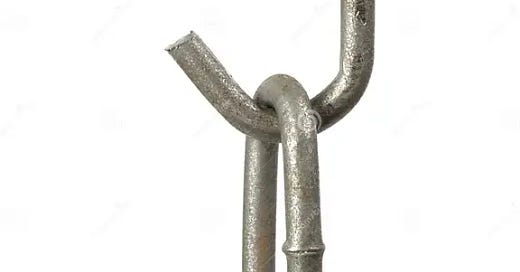The US-China Detente' trade deal
And how it affects supply chains and retailers (at least for 90 days)
Much has happened over the last week, so its important to understand where things are at, and what is next.
As of now here is where tariffs stand:
United States - tariffs at 55% (25% - Trade war 1.0 +20% fentanyl tariffs +10% (instead of 34%) April 2nd tariffs) for China imports (this does not include other tariffs such as those on EVs, the Section 232 tariffs on Steel, or proposed tariffs on using Iranian oil).
China - tariffs at 10% for US imports.
De-minimus (small shipments) are changed from a tariff rate of 120% to 54% or a $100/package charge.
How does this “pause” effect different interests on both sides?
Factories:
1: Get inventory to the US and produce less goods overall for the rest of the year.
2: Helps cash-flow issues - US buyers pay on time and often in-full (except Walmart, etc. which are often on a minimum 6-7 month payment terms).
3: Time to reorient product and sales channels such as direct-to-consumer, and to non-US markets.
4: Restart production and get staff back.
5: Better able to plan production for the rest of the year as there is a several month window to resolve challenges.
Raw Material producers:
1: Upstream producers get staff back and ramp up production.
2: Unload inventory through down-stream customers, generating cashflow.
3: Re-orient to non-US focused business, especially into Southeast Asia and the Middle East (as that is where supply chains are focused).
4: Better able to plan production for the rest of the year as there is a several month window to resolve challenges.
Logistics:
Flexport CEO Ryan Petersen stated in a tweet that bookings went up 35% the first day after the deal was reached, this will constrain an already challenged situation.
Costs will go up, margins will be squeezed, and there will likely be shortages of certain products such as those for Father’s Day and some Back-to-School.
1: US ports will be busy into October.
2: Logistics and shipping companies, including trucking, will be busy into October.
3: Uncertainty with tariffs and trade flows will affect the price of shipping through the end of the year, if not longer.
4: Ships that were positioned away from China have to be repositioned, which will also take some capacity away from Southeast Asia.
5: Prices are expected to rise significantly due to the rush, and the constrained amount of time to ship.
Retailers:
Father’s Day and Back-to-School will be challenged to meet sales, but Halloween, Black Friday, and Christmas should be within the average.
-Big Box Retailers (Walmart, Target, etc.)
Significant inventory was built up and sitting in factories, warehouses, and containers waiting to ship. One company I talked with last week has 45 containers of product waiting to go for the summer season (some of which will now be missed).
-Online Retailers (Amazon, Shein, Temu, etc.)
US warehouses, some goods will still be shipped by air freight, but it will be significantly less. Specialty products will be tougher to produce and sell as factories will focus on volume and getting products out for Christmas.
-Mom & Pops -
Can get inventory in and get business through most of the year. Beyond the summer, unverstainty reigns as
Who will “pay” the tariffs?
1: Walmart and other retailers are asking factories to take at least half of the tariffs, if not more. Most factories, due to wanting to get inventory out and production going, will take some of that.
2: Factories are negotiating with upstream suppliers to also take a few percentage points off, which will lessen the tariff hit.
3: US companies will be “told” to eat the tariffs, such as with President Trump’s message over the weekend regarding Walmart passing on the tariff hit to customers.
4: Small firms will take the brunt of the tariff hit, and will have to pass it on to customers.
What happens next?
1: The uncertainty hasn’t changed, or been clarified.
2: The US government has signaled that companies who do not move away from China will be tariffed and restricted, so you better move if you haven’t already. This has been heard loud and clear on the Mainland. Expect suppliers, producers, and customers from around the world to build out supply chains outside of China, as well as source non-China made products.
3: At 30% tariffs, some production continues to move from China. As most countires are at 10%, production will not move (or return to the US), but added costs will be folded into the overall price, increasing them for businesses and consumers in the US.
4: Expect chaos and uncertainty through the end of 2025, and likely beyond.


